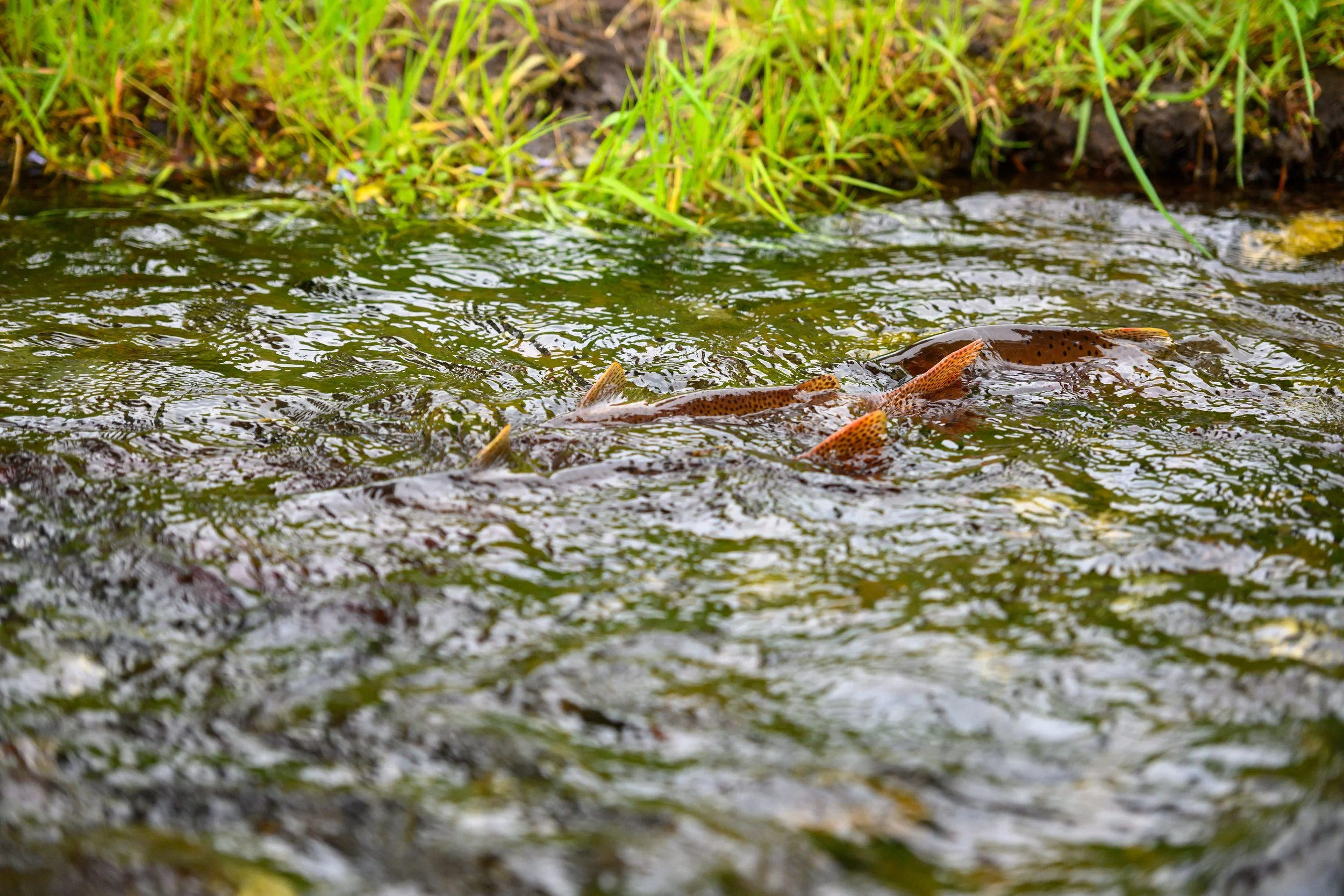Spring is right around the corner, eleven days to be exact, but who is counting? I know that come March 20th, I will be out in my favorite fishery, and if I'm lucky enough, I'll wet those dusty wading boots, but I'll need to watch my step.
I'm talking about trout redds. If you're unfamiliar with a redd, it's basically the river equivalent to that place where all the MTV cribs stars say, "the magic happens". If you're too young to know what MTV is, a redd is a place where a mommy trout and a daddy trout make babies. Identifying a redd is bar none, the most important piece of fly fishing knowledge you can ever learn. A redd can sometimes be a difficult thing to identify, but one golden rule applies. If you see two fish typically in shallow water, side by side and/or "wrestling", and they didn't spook when you walked up on them, you've just encountered a redd.
Let's get into the specifics. Rainbow and cutthroat trout spawn in the spring, typically from February to May depending on the year. The specific time varies as the trout will spawn in water temperatures of roughly 42-44 degrees. Brown and brook trout will spawn in the fall, typically between September and December, when temps drop back into that 42-44 degree range. Whitefish will spawn towards the end of the brown and brook trout spawn, and suckerfish will spawn towards the end of the rainbow and cutthroat spawn. When spawning occurs, the female will search out a shallow gravel bed and sculpt a nest called a redd. While the female prepares the redd, the Male will search out the female of their liking, and then spend their energy fighting off any other male from his hen. The Male will continue to protect the redd from all predators at any cost. Once the redd is prepared, the female will lay anywhere from 200-8000 eggs, and the Male will then fertilize them. This action obviously makes the trout very vulnerable, and is likely one of the most stressful events of a trout's life. Fun fact, some of the many brown trout in Boulder Creek are hermaphroditic, and can play both gender roles in the spawn.
Here are some easy tips to follow as you fish in the spring and fall. Most obvious, if you see two fish together in shallow water and they don't spook when you get close, don't fish there. If you haven't already located the redds in the fishery you're wading in, don't just stomp up and down the river. Get out and walk on the bank. Be observant (from the bank) of the area you're about to wade in and take your time to spot those spawning fish, especially in the shallow gravel areas. I will do my absolute best to not walk or wade in shallow gravel areas all together during these months. If you're new to the fishery, and see a guide trip, walk up and ask them about redds. The guide will be happy to point out an active trout redd to you. The easiest bit of advice is to fish with a stream thermometer. That way you'll know you need to pay attention if your water is around that 42-44 range.
If you need to see an active redd for yourself, go walk the runs at Lavern Johnson Park, previously known as Meadow Park, in Lyons this month. Many of the runs in this park become active redds, predominantly in the spring, and you'll see some of the largest rainbows in the St. Vrain, hanging out in plain sight. Leave your fly pole in the car and instead bring a bluetooth speaker with Marvin Gaye's greatest hits, because those trout have been tryin' to hold back this feeling for so long. Only kidding!
All jokes aside, it is not illegal to cast to fish actively spawning. But you're doing yourself and your fellow angler a disservice by fishing for them and you’re disrupting a critical life cycle in that fishery. If you do find a redd, here's a pro tip from a novice angler who spends every free second fishing (me), walk down to the deeper run just downstream and fish those seams. The Hens are pumping out about 200-8000 eggs at a time, some of those eggs will catch the current and float downstream, and those hungry brown trout have been known to eat an orange mottled bead that they thought was an egg.


